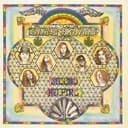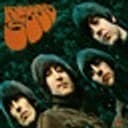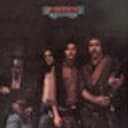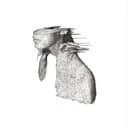Understanding the B♭ Mixolydian Mode
The B♭ Mixolydian scale follows the interval pattern 2-2-1-2-2-1-2 (whole-whole-half-whole-whole-half-whole), producing the notes B♭, C, D, E♭, F, G, A♭, B♭. As the fifth mode of E♭ Major, it begins on the dominant (fifth) degree of that parent scale. The key characteristic is the flattened seventh (A♭), which distinguishes it from the B♭ Major scale and creates the signature Mixolydian sound. This single alteration transforms the major scale's resolved quality into something more open and ambiguous, perfect for modal harmony and extended vamps.
Why Mixolydian Dominates Rock and Blues
The B♭ Mixolydian scale's popularity in rock and blues stems from its natural dominant seventh chord quality (B♭7: B♭-D-F-A♭). Unlike the major scale which resolves strongly to the tonic, Mixolydian maintains a perpetual state of tension that never quite resolves, creating an irresistible groove. This unresolved quality allows guitarists and pianists to sustain modal vamps indefinitely without the need for traditional resolution. Classic rock songs like "Sweet Home Alabama" and "Norwegian Wood" exploit this characteristic, building entire compositions around the Mixolydian mode's distinctive flavor that sits perfectly between major brightness and bluesy attitude.
Chord Progressions and Practical Applications
The most characteristic Mixolydian progression is the I-♭VII movement (B♭ major to A♭ major in B♭ Mixolydian), which immediately establishes the modal sound. Other common progressions include I-♭VII-IV (B♭-A♭-E♭) and the bluesy I-♭VII-♭III-IV pattern. The scale works beautifully over dominant seventh chords (B♭7), creating a resolved yet open sound that's neither tense nor conclusive. Compared to the B♭ Dorian scale, Mixolydian has a brighter, more optimistic quality due to its major third, while sharing the same modal ambiguity. This makes it ideal for creating grooves, riffs, and solos that maintain energy without traditional harmonic resolution.
Learning Tips for Piano and Guitar
For pianists, start by playing the E♭ Major scale from B♭ to B♭, which automatically gives you B♭ Mixolydian. Practice the scale in both hands across two octaves, emphasizing the A♭ to internalize the flattened seventh sound. Try improvising over a simple B♭7 chord or a two-chord vamp between B♭ and A♭ major. Guitarists can use the fifth position of the major scale pattern or think of it as a major scale with a lowered seventh. Start with simple pentatonic-based licks and gradually incorporate the fourth and seventh degrees. The key is developing an ear for the modal sound—listen to classic Mixolydian songs and notice how the flattened seventh creates that signature rock/blues character without sounding minor.
Modal Relationships and Creative Applications
Understanding B♭ Mixolydian's relationship to other modes opens creative possibilities. While it's the fifth mode of E♭ Major, it shares notes with B♭ Ionian (just lowering the seventh) and sits between the brightness of B♭ Major and the darker quality of B♭ Natural Minor. You can create modal interchange by borrowing chords from parallel modes—for example, mixing B♭ Mixolydian with B♭ Dorian for a variable minor/major third. Advanced applications include using Mixolydian over altered dominant chords in jazz, creating polymodal textures by layering Mixolydian in one hand with another mode in the other, or using it as a color scale over non-diatonic progressions. The scale's versatility makes it equally at home in country, funk, Celtic music, and progressive rock.





